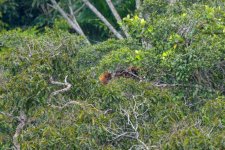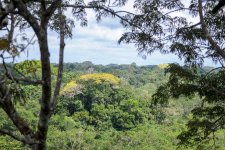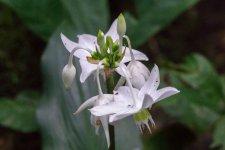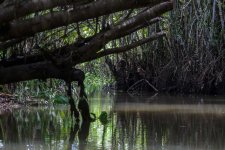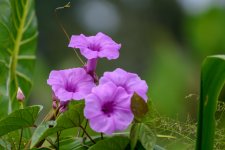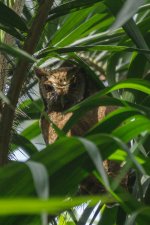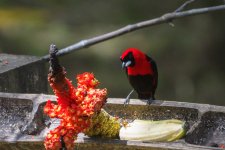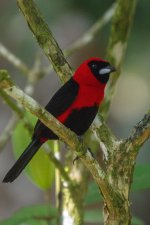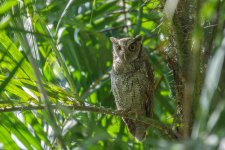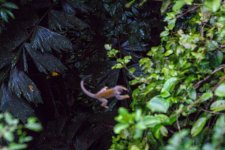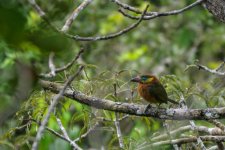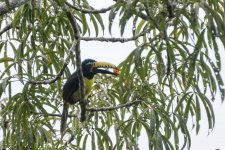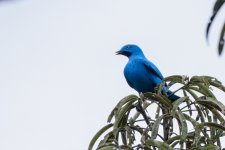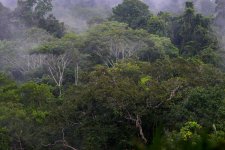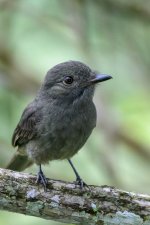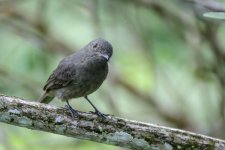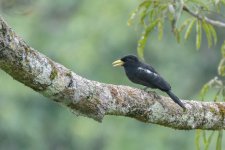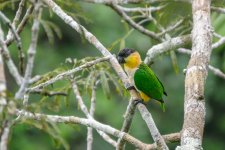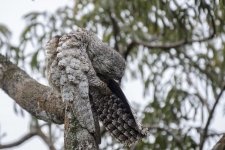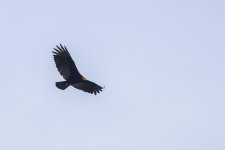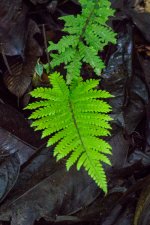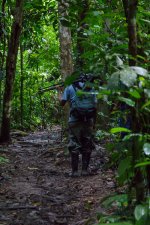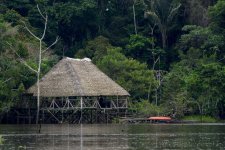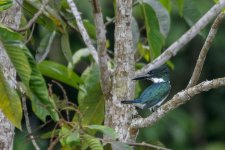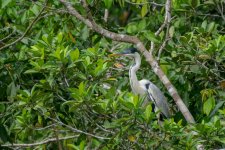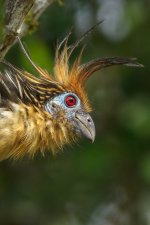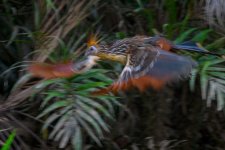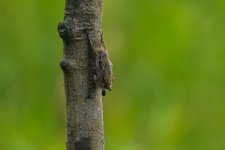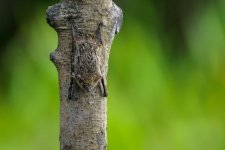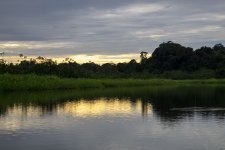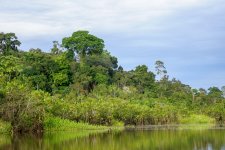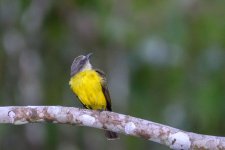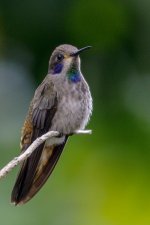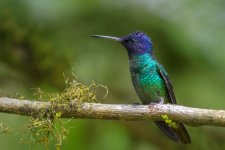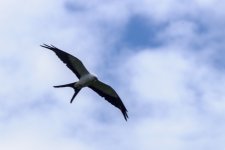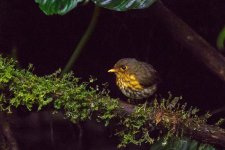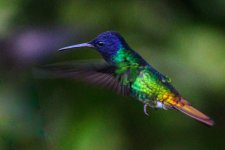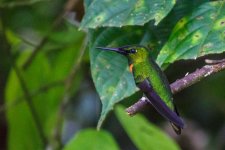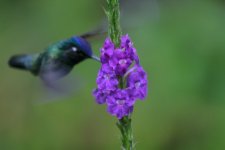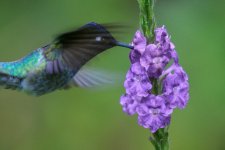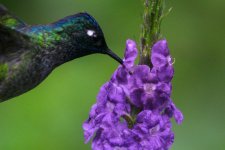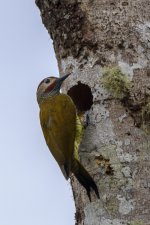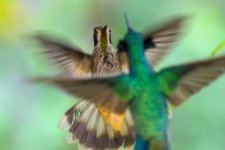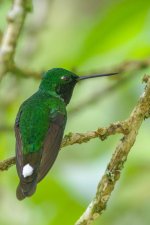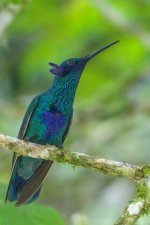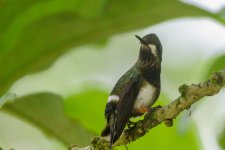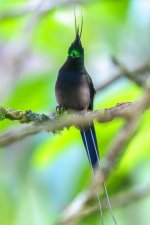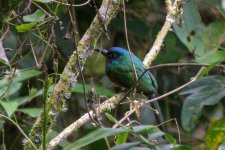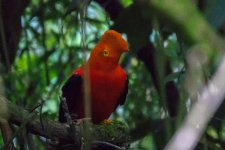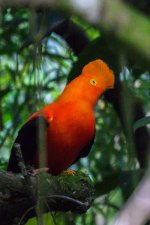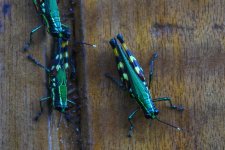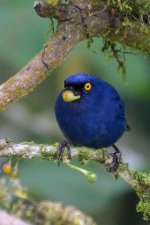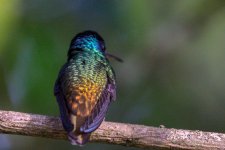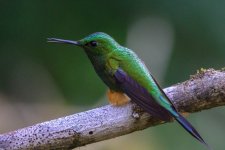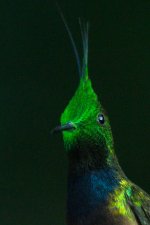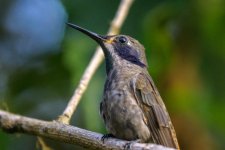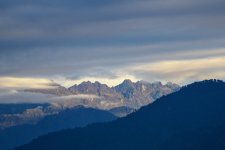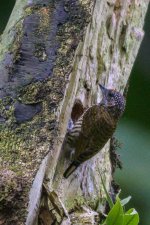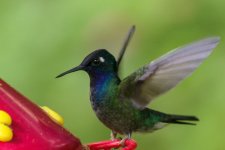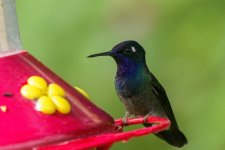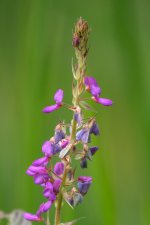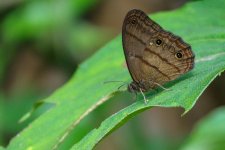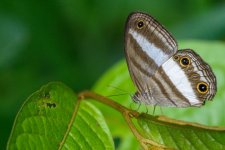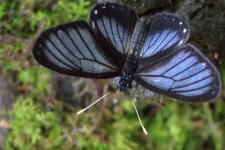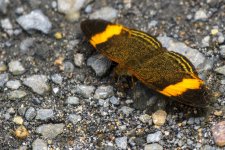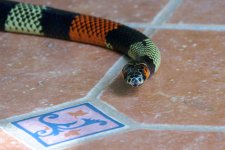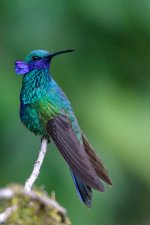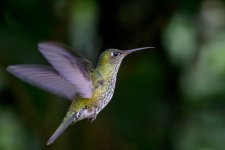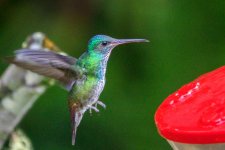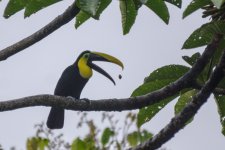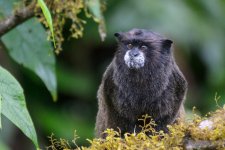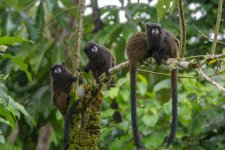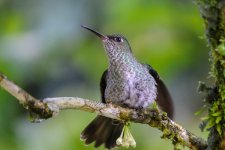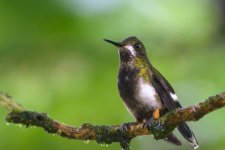kitefarrago
Well-known member
As the sun is rising the mist clears and it is getting a bit warmer. The sky turns pale blue with some cloud.
We keep seeing more good birds, and the scopes start to see some use, but photography is quite difficult, and I end up with few photos from this morning.
We have Opal-rumped Tanager, Plum-thraoted Cotinga, Many-banded Aracari, Ruddy Pigeon, Black-tailed Tityra and Gilded Barbet.
Three people join us briefly before moving on again - they are camping at the lodge, and they move around without a guide, os this does seem to be an option here for those so inclined.
When visibility has become good Carlos starts scanning with his scope, and triumphantly finds what he has been looking for: a young Crested Eagle sits out in the open, but a considerable distance from where we are. None of us was expecting one of the large eagles, so this clear if distant sighting brings a grin to all our faces.
It's turned out meanwhile that Jason seems to know just as much about the various birds as Carlos does, and he knows how to deal with a scope too. I talk to him about this at some point, and he is serving some kind of apprenticeship within their system.
The other groups comes by for a visit, and they are fortunate in that this coincides with a brief (and also distant and obscured) view of some red howler monkyes. It's a bit noisy while they're about, but they don't stay all that long and we have the tower to ourselves again.
A Greater Yellow-headed Vulture flies by, and we also see Masked Tanager as well as a Lafresnaye's Piculet, and a Slender-billed Kite is see flying. Heard birds while we were here are Blue-crowned Trogon, Orange-rumped Amazon and Purple-throated Fruitcrow.
Eventually it is time to go back down. On the way back to our canoe we find Long-billed Woodcreeper and a Grey Antwren, as well as a Golden-headed Manakin not too far from the path.
During the canoe ride back we see Green and Ringed Kingfishers, a Grey-headed Kite, several Hoatzin, Smooth-billed Anis, Little Cuckoo, Green-backed Trogon, White-eared Jacamar, and a Laughing Falcon on a dead tree.
Andrea
Red howler monkeys
View from the canopy tower
rainforest flowers
View from the canoe
glimpsed from the canoe
We keep seeing more good birds, and the scopes start to see some use, but photography is quite difficult, and I end up with few photos from this morning.
We have Opal-rumped Tanager, Plum-thraoted Cotinga, Many-banded Aracari, Ruddy Pigeon, Black-tailed Tityra and Gilded Barbet.
Three people join us briefly before moving on again - they are camping at the lodge, and they move around without a guide, os this does seem to be an option here for those so inclined.
When visibility has become good Carlos starts scanning with his scope, and triumphantly finds what he has been looking for: a young Crested Eagle sits out in the open, but a considerable distance from where we are. None of us was expecting one of the large eagles, so this clear if distant sighting brings a grin to all our faces.
It's turned out meanwhile that Jason seems to know just as much about the various birds as Carlos does, and he knows how to deal with a scope too. I talk to him about this at some point, and he is serving some kind of apprenticeship within their system.
The other groups comes by for a visit, and they are fortunate in that this coincides with a brief (and also distant and obscured) view of some red howler monkyes. It's a bit noisy while they're about, but they don't stay all that long and we have the tower to ourselves again.
A Greater Yellow-headed Vulture flies by, and we also see Masked Tanager as well as a Lafresnaye's Piculet, and a Slender-billed Kite is see flying. Heard birds while we were here are Blue-crowned Trogon, Orange-rumped Amazon and Purple-throated Fruitcrow.
Eventually it is time to go back down. On the way back to our canoe we find Long-billed Woodcreeper and a Grey Antwren, as well as a Golden-headed Manakin not too far from the path.
During the canoe ride back we see Green and Ringed Kingfishers, a Grey-headed Kite, several Hoatzin, Smooth-billed Anis, Little Cuckoo, Green-backed Trogon, White-eared Jacamar, and a Laughing Falcon on a dead tree.
Andrea
Red howler monkeys
View from the canopy tower
rainforest flowers
View from the canoe
glimpsed from the canoe




